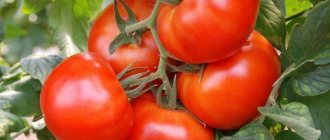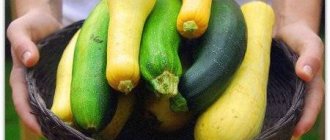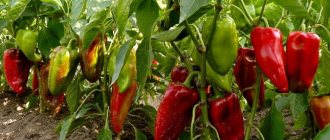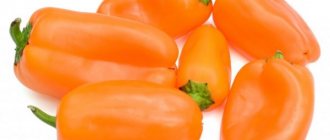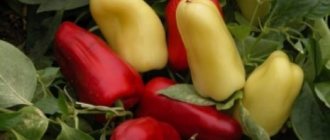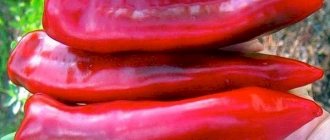Being a native southern plant, pepper has already been changed by selection to such an extent that it can grow and bear fruit in the rather harsh conditions of northern Russia. The sharply continental climate of Siberia, with its hot, short summers and cold, long winters, places specific demands on southern cultures.
Gardeners in the Trans-Ural regions are forced to choose early-ripening varieties. Moreover, depending on the station that breeds new varieties, the indication of early ripening of the variety will vary. The indication “Ultra early maturing varieties” of southern stations may be similar to the indication “early maturing varieties” of more northern stations.
Unfortunately, the vast majority of seed sellers are still resellers. Less than ten percent of them are manufacturers. But manufacturers have another problem. When breeding excellent varieties with early fruiting, intended for northern regions, they most often do not indicate the number of days until harvest. The terms “early ripening”, “mid ripening”, “late ripening” are very vague and arbitrary. Often the word “ultra-early” in the description of a variety on seed packaging is simply a marketing ploy.
Varieties that bear fruit 90–110 days after the appearance of full-fledged shoots can be called both early ripening and ultra-early by the manufacturer.
A clear example of such a marketing ploy is the variety of sweet pepper from the company SeDeK. Most likely, they did not mean anything bad, it’s just that in the conditions of the Moscow region, where the fields of this company are located, a variety with a period of 100 days before fruiting is indeed very early. Typically this company lists early ripening varieties with a maturity of 105 to 120 days. But in the conditions of Siberia, such a variety can no longer be called ultra-early ripening. Maximum early ripening.
Pepper Greenhouse Ultra early ripening
Variety from SeDek with a period of 100 – 110 days. In the description, however, it is indicated as early ripening.
Important! When purchasing seeds, always pay attention to the description of the variety and the manufacturer.
This is a sweet pepper variety with large fruits weighing up to 120 grams. The walls of the fruit are fleshy. Pepper has high taste qualities. You can pick them starting with green fruits, although fully ripe peppers are red. Recommended for cooking and fresh consumption.
Bush up to 70 centimeters high.
With all the advantages of the variety, it cannot be called ultra-early, although it is quite suitable for cultivation in the northern regions of Russia.
Second example: the “Health” variety from, located in Barnaul. The company is northern and its “ultra-early” characteristic differs from the characteristics of a company located near Moscow.
Early sweet pepper varieties for open ground
There are many varieties of bell peppers with an early ripening period. Gardeners, as a rule, prefer them. The fruits differ in size, color, shape. Everyone has their own characteristics in care.
Let's consider the earliest varieties of peppers for growing in open ground.
"Ivanhoe"
Despite its youth, it is already popular among vegetable growers. It is a small semi-standard bush (1 or 2 stems). It grows, develops, and bears fruit well in the middle and southern parts of the country.
The fruits are medium, weighing up to 130 grams each. They have a variety of colors: from rich orange to bright red. The interior consists of four separate sectors with seeds. Despite his short stature, he requires a garter. Moderate watering is important. Due to drought, it may stop producing fruit.
Productivity is from 6 to 7 kg per 1 m2.
Pepper "Atlantic" F1
The heat-loving hybrid feels great in the north-west of the country, as well as in its southern part. Copes well with low temperatures.
The average height of the shrub in adulthood reaches 1 meter. Ripening green peppers have a fiery, bright, red color as they grow. Weight - up to 150 grams. The shape of the fruit is prism-shaped, with 3 sides.
It surpasses many varieties in terms of taste. Productivity is high: approximately 10 kg per 1 m2.
Pepper "Funtik"
The “Funtik” variety is early ripening with medium-sized bushes. Covered with dense, abundant foliage. The height of an adult bush does not exceed 70 cm. Mandatory gartering of branches is required. High resistance to damage by viruses and pests.
The weight of the fruit is from 150 to 180 grams. It has the shape of a cone, with graceful, smooth curves. The harvest per season is obtained in a volume of 9 to 10 kg per 1 m2. Up to 18 peppers ripen on a bush. The walls are 0.7 cm thick.
Pepper "Lumina"
"Lumina" is popular among farmers. It is a short standard bush with sweet fruits. Ripe fruits have a golden-white or delicate green color. Sometimes you can find fruits with a pinkish tint.
The weight of an individual fruit is from 100 to 115 grams, and the wall thickness is up to 0.5 cm.
Lumina peppers do not require special care. However, if there is a lack of soil moisture, they may acquire a bitter taste. Resistant to viruses. Not affected by pests.
Productivity ranges from 6 to 8 kg per 1 m2.
"Winnie the Pooh"
Low compact 30 cm bushes. The arrangement of the fruits is similar to a bouquet. They have a cone shape and a bright red color. The weight of the fruit is from 50 to 80 grams.
The fruit has a smooth surface with a pointed tip. Excellent resistance to mechanical stress and protective properties against pests and diseases.
All peppers ripen at the same time, which makes harvesting easier. Despite the modest yield indicators - about 2 kg per 1 m2, it is in demand.
Health
A striking example of an ultra-early sweet pepper with a growing season of 78 - 87 days. The bush is tall. The fruits are large, up to 80 grams. Cone-shaped. When ripe, the color of the fruit is dark red. It is good because it has good fruit set at low temperatures.
These two examples clearly show the difference in crop ripening of as much as twenty days. For cold regions where summer is very short, this is a very long time.
The same company no longer offers an ultra-early ripening variety of sweet pepper, but an early ripening one.
Thick-walled varieties for planting in Siberia and the Urals
Fruits with a thick pericarp are also obtained when peppers are grown in regions with harsh climates. When planting a crop in a garden bed, it is recommended to cover the plantings with arcs with film covers or non-woven material.
Siberian format
Plants in the OG reach 80-90 cm. On a bush there are 12-15 peppers, large, with a thick pericarp (9-10 cm). The pulp is without bitterness, has a rich sweet taste, and has a characteristic “pepper” aroma. The variety is not demanding on soil fertility, but requires regular watering.
White gold
A variety from the group of low-growing peppers (50 cm). The crown is closed, with a large number of leaves. Peppers when fully ripe are yellow-pearl with transparent skin. They reach approximately 300-400 g, the pericarp is 7-8 mm. Fruit taste: sweet with spicy notes.
Ural thick-walled F1
Peppers are distinguished by a thick pericarp (10 mm). Bushes grow up to 80-90 cm (OG). Large fruits when ripe are dark burgundy and weigh 300-400 grams. A versatile hybrid: suitable for lecho, in various frosts, and for fresh eating.
gold bar
“Cubes” of this variety are suitable for long-term storage. If you plan to store peppers, it is advisable to harvest them at a state of technical ripeness.
Golden peppers weighing 180-300 grams ripen on low bushes. Feature: resistance to low temperatures, excellent collection.
Apple saved
Judging by the reviews of gardeners, this variety of Siberian selection surprises with its compact bushes and large fruits. Plants reach only 45 cm, while forming peppers weighing 150-180 grams. Cuboid fruits have a pericarp up to 7-8 mm, bright red skin and pulp with a burgundy tint. About 1.5 kg of peppers are collected from the bush.
Sweet peppers of ultra-early varieties
can offer three ultra-early ripening pepper varieties. All peppers are sweet.
Blond
Requires 95 days to harvest. The fruits are cube-shaped, golden yellow. The average weight of pepper is 250 grams. The bushes are quite large. The manufacturer recommends maintaining a distance of 50 centimeters between plants and 35 centimeters between rows.
Brother Fox
The variety needs 85 - 90 days before fruiting. The orange fruits are relatively small, weighing about 100 grams. Standard bushes, medium size, up to 70 centimeters. Very good in fresh salad. Although the purpose of the variety is universal.
Pinocchio F1
An ultra-early hybrid that bears fruit on the 90th day after germination. The bushes are tall, standard, and do not require formation. The fruit is cone-shaped, elongated. The length of the pepper is up to 17 centimeters, the diameter is up to 7. Weight is up to 100 ten grams with a wall thickness of 5 millimeters. It has a very good yield, yielding up to 14 kilograms per m² with a planting density of 5 – 8 plants per unit area.
Nemesis F1
The ultra-early ripening variety Nemesis F1 is offered by the Dutch company Enza Zaden. This pepper will have to wait 90-95 days for harvest. Fruits weighing up to 100 grams. Unripe peppers are almost white in color, while ripe ones are red. The difference between this variety is its well-developed root system.
The company suggests that when purchasing seeds from its production, pay attention to the packaging in order to avoid counterfeits. There are no inscriptions in Russian on the original packaging. All text is written in Latin in English. The packaging must indicate the packing date and batch number. The original seeds are orange.
To be fair, it should be noted that in Russia, which has a more severe climate, the ripening time of this hybrid is somewhat longer than indicated by Dutch breeders. The fruits set at the stated time, but take longer to turn red. Moreover, in the case of a hot season, the ripening time is reduced. It follows that the ripening time of the variety directly depends on the environment.
Of the others that do not meet the stated characteristics, we can note a smaller number of ovaries in the bunch, which is also associated with the cold climate. But the size of the fruit does not depend on the average annual temperature.
The multi-machine concern Bayer, which includes the Nunems agrotechnical division, offers three ultra-early varieties of peppers.
Claudio F1
As the name suggests, this is a first generation hybrid. It is characterized by high productivity. The fruits are large, reaching 250 grams of weight. The wall thickness is more than a centimeter. The color of the ripe fruit is dark red. Unripe peppers are dark green.
The harvest can be harvested on the 72nd day. Under unfavorable conditions in the 80s. The bush is very powerful, densely leafy, upright. Peppers can be grown both in greenhouses and in open beds.
It is resistant to stress, sunburn and viral diseases.
Gemini F1
Also an early variety. It bears fruit 75 days after planting the seedlings. It bears very large fruits weighing up to 400 grams. One bush produces 7 to 10 cube-shaped peppers. Dimensions 18 centimeters by 9. Wall thickness 8 millimeters. Ripe fruits are bright yellow. Versatile. Used fresh in salads, as well as in canning and cooking.
Similar to the Claudio variety, it is resistant to stress, sunburn and disease. Peppers are grown in shelters and in the open air.
The variety that stands out in the Nunems assortment is
Samander F1
You only have to wait 55-65 days before harvesting this pepper. Ripe fruits are red, conical in shape. Compared to the previous two, the fruits are small, “only” up to 180 grams.
Peppers of this variety have good keeping quality. They are easy to transport. Due to these properties, the hybrid is often grown on farms for commercial purposes.
Another ultra-early variety is offered by the Swiss company Syngenta.
Love F1
This variety requires 70 days. Unlike those described above, this hybrid is grown only in open ground, so you should be careful when trying to grow this variety in the north of Russia. Fruit weight 120 grams. When ripe, peppers have a rich red color.
Additionally, a few more domestic varieties are worth mentioning.
Dobrynya
Refers to ultra-early varieties with a period of 90 days. The bushes are standard, tall. The foliage is average. The fruits weigh up to 90 grams, are red when ripe and light green when unripe. The wall thickness is average, 5 millimeters.
Oriole
The fruits are light yellow. The first harvest, depending on conditions, can be harvested starting from the 78th day. The variety has a very wide geography. It can be grown throughout northern Russia. The variety “captures” the entire Trans-Urals plus regions from Arkhangelsk to Pskov.
Fakir
In Siberian conditions it bears fruit already on the 86th day. Unripe fruits are light green with yellowness, which distinguishes it from other varieties. Able to ripen completely to red color in open ground. The fruits are small, only up to 63 grams. But there are a lot of them. You can get 3 kilograms of peppers per square meter.
Cardinal F1
The period before fruiting is 85 days. Tall bushes, up to 1 meter. Fruits weighing up to 280 grams have a thick wall (1 centimeter). The cube-shaped fruits are purple in color when ripe. In this regard, the logic of the creator of the variety is unclear. The cardinal's robe is red. The bishop's purple one.
Fidelio F1
Ultra early. Requires an average of 85 days before fruiting. The bushes are tall, up to 1 meter. Cuboid peppers are silvery-white in color. The weight of thick-walled (8 mm) fruits is up to 180 grams.
Philippok F1
80 days pass before harvest. The bushes are low and there is little foliage. The fruits are small, only up to 60 grams, but have a good taste. The wall thickness is not inferior to some large-fruited varieties and is 5 millimeters.
Tips for growing the Samander pepper variety
In cold summer conditions, Samander is best grown in a greenhouse or greenhouse. Where it is warmer, pepper will produce a good harvest in open ground. This hybrid is often grown for sale, occupying significant areas, since the fruits have excellent commercial quality and are well stored.
Agricultural technology for pepper is standard. It requires watering, fertilizing, loosening, weeding, and preventive treatments against pests. The more care the plants receive, the better the pepper will taste. Cultivation begins with sowing seeds for seedlings.
When to sow Samander pepper seedlings
For the Moscow region and neighboring regions, planting dates fall in mid-February. If peppers are to be grown in open ground, sowing is carried out 2 weeks later. The seeds should be sown to a depth of 2-3 cm. The substrate should be nutritious and loose. Until germination, the container with the crops is kept in a warm place at a temperature above 25° C.
How many days does it take for Samander pepper seeds to germinate?
The higher the room temperature, the faster the seeds will hatch. At 28°C it will take 1 week. If the room is 25-27° C, the pepper will sprout in 10-15 days. After this, the seedlings should be kept at a temperature of 16-18° C for 5-6 days.
The coolness will prevent the pepper from overgrowing. After a week, the temperature is again raised to 25° C. At first, the seedlings are carefully watered with a syringe, supplying water to the root zone. Within a month from the moment of planting, the plants will have to be illuminated with a fluorescent or LED lamp for 2-3 hours in the morning and evening.
After 2 leaves appear, the seedlings are planted in separate containers, watered the day before transplanting. Before planting in the garden, the seedlings are hardened off for two weeks, gradually accustoming them to the open air. At first you can only open the window slightly, and later you can take it out onto the balcony.
When and at what distance to plant Samander pepper in the ground
After the soil temperature in the garden bed warms up to 15-18° C, and the air temperature is above 20° C, the seedlings can be planted in a permanent place in the greenhouse. If the pepper is intended for open ground, you need to wait until the threat of frost disappears. For 1 sq. m of planting area place 3-4 bushes.
Ripening period
The hybrid belongs to the early ripening varieties. The first fruits on the bushes ripen in mid-summer. Samander bears fruit before the first frost arrives. In autumn, the fruits can be picked at the stage of technical maturity and ripened at home.
Watering
Water the pepper 1-2 times a week, depending on the air temperature. To prevent watering from being burdensome for gardeners, you can mulch the bed with pepper with peat, grass, sawdust, and straw.
This procedure will also eliminate the need to loosen and weed the soil. Water for irrigation should be settled and warm. It is necessary to water the bushes so that drops of moisture do not fall on the stems and leaves.
What and when to feed
It is advisable to feed peppers every 2 weeks throughout the growing season to get a good harvest. It is better to alternate organic and mineral fertilizers. At the beginning of growth, peppers need more nitrogen; starting from the moment of flowering, feeding should include phosphorus and potassium.
Nitrogen-containing fertilizers - mullein, bird droppings, weed infusion, urea, ammonium nitrate. The source of phosphorus is superphosphate, and potassium is potassium salt, potassium magnesium. Specialized fertilizers for peppers are also suitable as fertilizing.
Is it necessary to form a Samander pepper bush?
Like other determinate varieties, Samander does not require shaping. It is necessary to form a bush only if it has unlimited growth. To make the peppers larger, pinching is carried out, removing growing axillary shoots that take away nutrition from the fruits.
Diseases and pests
The described hybrid is resistant to the tobacco mosaic virus and generally has strong immunity. To prevent the pepper from getting sick, it must be properly watered and placed in accordance with the recommended planting pattern. If the plant looks depressed, it is examined.
Perhaps there are pests on the pepper. In this case, the infected bushes are sprayed with an infusion of onion, garlic, wormwood, or biological insecticides are used (Bikol, Verticillin). Fungal diseases manifest themselves by the appearance of spots. In this case, treatment with an appropriate fungicide will be required.
Hot ultra-early ripening varieties of peppers
Small miracle
It is also distinguished by its early ripeness. The period before harvest is about 90 days. Can grow in open beds, in a greenhouse, or indoors.
Bush 50 centimeters high, with a lot of branches. The fruits are only 2–3 centimeters long and weigh up to 5 grams. The fruits ripen unevenly. During the ripening process, they change color 5 times: from green to red.
Aladdin
This pepper takes an average of 100 days to ripen. It cannot be called ultra-early, but it is early enough to interest residents of the northern regions. The bush is semi-spreading, up to 60 centimeters high.
Orange miracle
An ultra-early variety with a period before fruiting of 90 days. The height of the bush is only 30 centimeters, the weight of the fruit is 5 grams.
Attention! Peppers can be pollinated both by their own pollen and by pollen from neighboring bushes, so when planting sweet and bitter peppers at the same time, it is necessary to space them as far apart as possible.
Sweet pepper seeds. Order in the online store. Mail delivery!
In recent years, sweet peppers have become more and more popular among gardeners. And although there are many varieties and hybrids today, our specialists could not stay away from the selection of this valuable crop.
Our peppers, especially the yellow and orange ones, have a very special, truly sweet taste. Anyone eats these peppers with pleasure, like apples.
HYBRID SWEET PEPPERS.
IMPORTANT: CHOOSE THE CORRECT PEPPERS according to their ripening time and place them correctly on YOUR PLANT. For OPEN ground it is better to choose very early ripening pepper hybrids, the growing season is 100 -120 days. In an UNHEATED film greenhouse (greenhouse) - mid-early varieties, growing season 120 -135 days. In a heated greenhouse - mid-season (120 -135 days) and late-season growing season 135 -150 days. IMPORTANT: WHEN WORKING, FOLLOW ALL MEASURES FOR DISINFECTION of containers (boxes, seedlings and bowls), work with gloves. Wear gloves or wash your hands periodically or wipe them with disinfectant. napkins. There are very frequent cases when the infection gets on the seeds due to insufficiently carefully treated containers. Be sure to wash new containers. Wash used containers and soak them for a day in a DEO CHLOR solution (2 tablets per 10 liters of water), then rinse thoroughly.
DATE for sowing seedlings from February 15 to 20, late-ripening hybrids - from March 1 to March 10, early-ripening hybrids. The age of pepper seedlings before planting seedlings in the ground (greenhouses) should be on average 65 – 75 days (80). The closer to the bright and warm spring days you sow the seeds, the higher the solar activity and your seedlings will grow faster. All phases of seedling development pass quickly. According to personal observations, seedlings sifted in March very quickly catch up with seedlings sown in January.
PRIMING. 35% peat, 20% purchased high-quality soil with fertilizers and microelements, 30% non-tomato garden soil steamed to 60°C, 10% homemade or purchased vermicompost, 4% perlite, 1% vermiculite. AGRONOMS recommend growing peppers WITHOUT PICKING. Both options are possible. With and without picking. Based on experience with picking, pepper ultimately produces a higher yield. It must be taken into account that picking delays the development of peppers after picking for an average of 2 weeks, while the root system of the pepper masters the earthen ball in the seedling cup. Subsequently, the picked peppers always catch up with the unpicked ones.
Let's consider BOTH sowing OPTIONS. PEPPER WITHOUT PICKING.
Fill seedling glasses with drainage holes on the sides and in the bottom, with a capacity of 300 - 400 ml, with fine charcoal to a height of 2 cm. Pour 1/6 teaspoon of CALCIUM nitrate onto the drainage layer, literally at the very tip. Pour soil on top of the drainage layer to ¾ of the volume of the glass. Moisten the soil from a spray bottle with a solution of any Humate. Dilute the humate according to the instructions; the color of the humate solution should be the same as the color of weakly brewed tea. At a distance of 3-4 cm from each other, place 2 dry hybrid pepper seeds in a seedling glass on top of the soil and lightly press them into the soil. Once again spray the humate solution directly on the seeds to stimulate germination energy. Cover the top with a 0.5 cm layer of dry soil. Place the seedling cups in a box. Cover the top with film to create a greenhouse effect, i.e. to preserve heat and protect the soil from drying out. Place the boxes in a warm place. The temperature required for the germination of hybrid pepper seeds should be at least +30°C. The waiting time for germination depends on the freshness of the seeds. Fresh seeds begin to germinate within 4-5 days. 3-4 year old seeds can germinate only on the 14th day. When the first shoots appear, remove the film. Place the peppers under the backlight. PEPPER IS A SHORT DAY PLANT and at the same time with maximum illumination during this photoperiod. His need for light is only 11-12 hours a day. With longer daylight hours, the seedlings become elongated and thin. Spray the soil in the glasses, where shoots have not yet appeared, with a spray bottle as it dries. After emergence of seedlings, the temperature for pepper seedlings should be REDUCED to + 22 ° - 25 ° DAYtime and +16 ° - 18 ° at night. Pepper is more heat-loving than tomato. 2-3 weeks after germination, only one of the strongest seedlings should be left in the seedling glass. The weaker seedling is removed. As the seedlings grow, it is advisable to spray them with any pale solution of Humate once a week. It is advisable to change humates. The first week Humate +7, the second week Humate + iodine, the third week regular POTASSIUM Humate.
